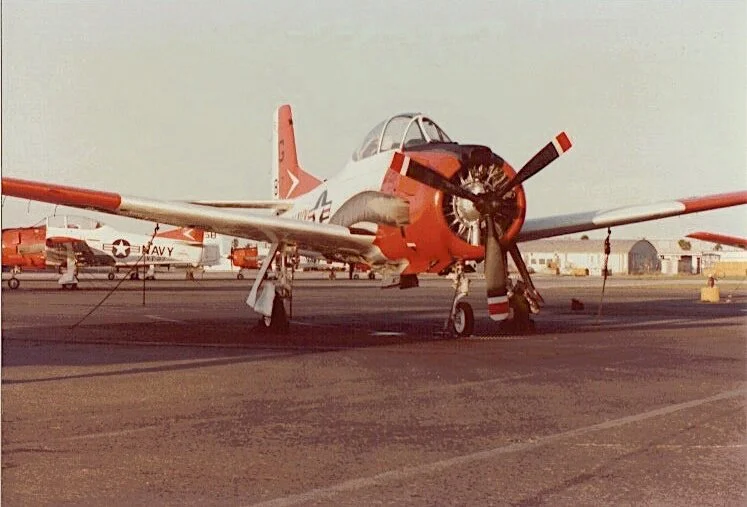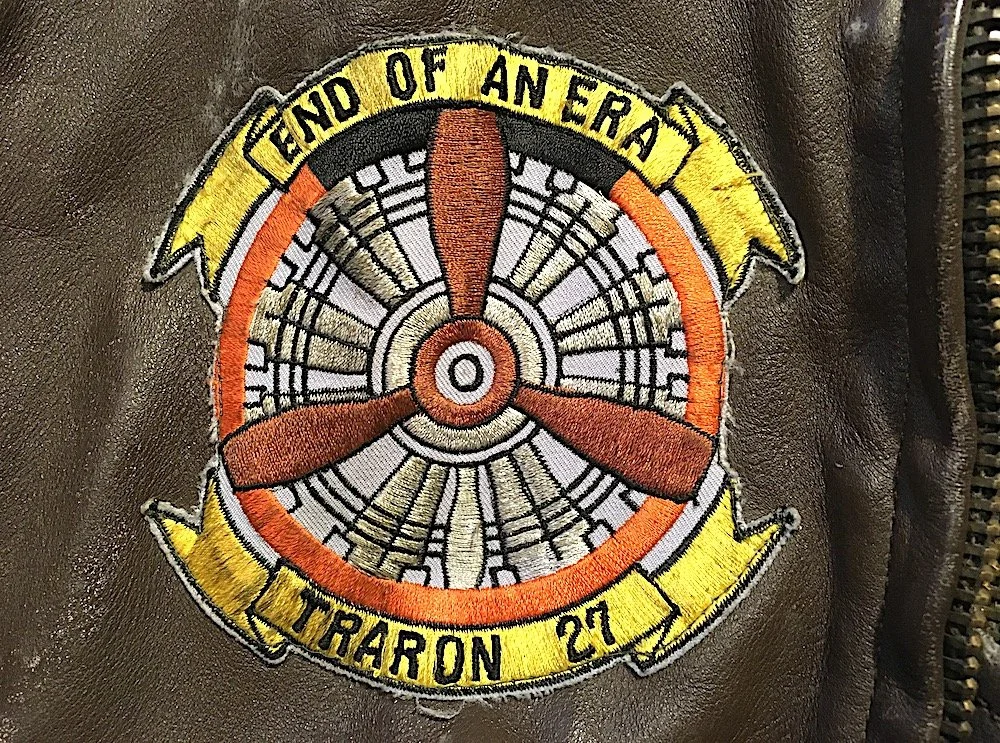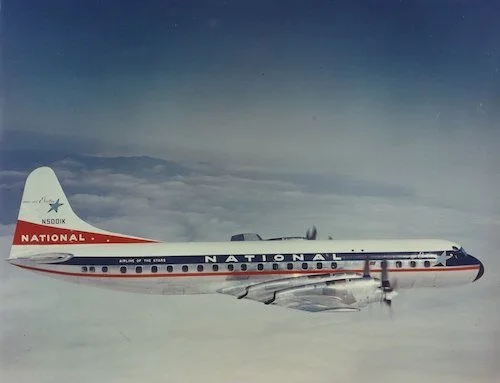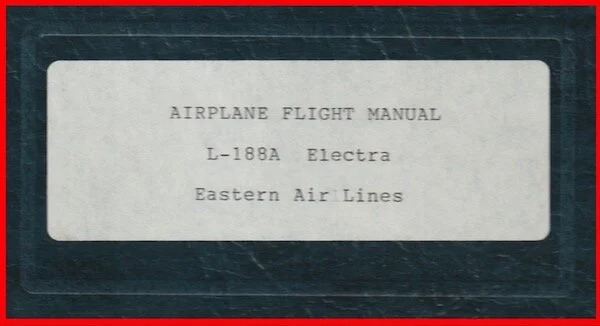Ground School
Take a seat, please - Ground School is in session
North American Aviation T-28B Trojan, seen on the ramp at Training Squadron TWENTY-SEVEN (VT-27), Naval Air Station Corpus Christi, Texas - July 1983. Photo: A.A.S.
T-28B Flight Training Instructions (1983)
BACK IN THE EARLY 1980S, THE NORTH AMERICAN T-28B TROJAN WAS BEING USED BY ONLY ONE U.S. NAVY PRIMARY TRAINING SQUADRON – NAMELY TRAINING SQUADRON TWENTY-SEVEN (VT-27), BASED AT NAVAL AIR STATION CORPUS CHRISTI, TEXAS. INDEED, VT-27, ITSELF ASSIGNED TO TRAINING WING FOUR (TW-4), WAS THE LAST SQUADRON OF ANY TYPE TO EMPLOY THIS VENERABLE RADIAL ENGINE AIRCRAFT. BY 1984, THE TYPE, WHICH BY THIS TIME INCLUDED ONLY THE B-MODEL TROJAN, WOULD BE GONE ALTOGETHER, REPLACED BY THE BEECHCRAFT T-34C TURBO-MENTOR.
The carrier capable “Charlie” model T-28C had been earlier retired, as it suffered from fatigue issues, resulting from thousands of carrier landings.
IN THESE WANING DAYS OF THE T-28, A STUDENT NAVAL AVIATOR (SNA) WHO CHECKED IN TO VT-27 WAS INFORMED THAT SYSTEMS GROUND SCHOOL WAS SELF-TAUGHT, CONSISTING OF A PILE OF PAMPHLETS CALLED FLIGHT TRAINING INSTRUCTIONS OR FTIS. ALTHOUGH THE COURSE WAS SELF-PACED, AN SNA DID HAVE TO COMPLETE ALL THE FTIS BY A CERTAIN STAGE OF HIS OR HER TRAINING. IT WAS A RELATIVELY SIMPLE PROCESS – READ THE FTI, ANSWER ALL THE QUESTIONS ALONG THE WAY, AND THEN TAKE A CRITERION TEST – A “CRIt” TEST – AT THE END OF EACH FTI. WHEN ALL FTIS WERE COMPLETED THERE WAS A COMPREHENSIVE FINAL.
PRESENTED HERE ARE THE FTIS FOR THE T-28B AND T-28C MODEL AIRCRAFT.
A SIDE NOTE: CONTRARY TO POPULAR BELIEF, AT THIS TIME (the late 1970s and early 1980s) AN SNA WITH ORDERS TO VT-27 BEGAN TRAINING FROM DAY ONE IN THE T-28. THERE WAS NO INTRODUCTORY TRAINING IN A SMALLER AIRCRAFT. SNAS WITH ORDERS TO VT-2, VT-3 OR VT-6 – ALL ASSIGNED TO TW-5 AT NAS WHITING FIELD, FLORIDA – CONDUCTED ALL THEIR FLIGHT TRAINING IN THE T-34C.
Click on the title to open the document:
T-28 Primary:
1. Introduction to the T-28 Aircraft
T-28 Engineering Primary:
2. Electrical System - Direct Current
3. Electrical System - Alternating Current
4. Instruments
5. Fuel System
6. Induction, Supercharger, and Carburetor
7. Ignition System, Heating, and Ventilation
8A. Hydraulic System - Part 1
8B. Hydraulic System - Part 2
8C. Hydraulic System - Part 3
9A. Lubrication and Propeller Systems - Part 1
9b. Lubrication and Propeller sytems - Part 2
T-28 Aerodynamics primary
1. Introduction, construction, and design characteristics of the T-28
Convair C-131F Samaritan (BuNo 141024), assigned to the U.S. Navy’s Pacific Missile Test Center - April 1977. Photo: The Lawson Collection - National Museum of Naval Aviation, Naval Air Station Pensacola, Florida.
Convair C-131F and C-131G
NATOPS Manual (1975)
Prior to the September 1962, re-designation of all U. S. Navy aircraft, the C-131F and the C-131G were designated R4Y-1 and R4Y-2, respectively. These birds were based on the civilian Convair 340/440 ConvAirliner series of short to medium range airliners.
The first of a long lineage of hardworking airplanes, the Convair 240 (two engines - forty passengers) first flew on 16 march 1947. Over the ensuing decades the airframe was upgraded, enlarged and was the subject of many modifications. Over 1,000 airframes were built.
Dimensionally, the C-131F (R4Y-1) and the C-131G (R4Y-2) were the same size, and both were powered by two Pratt & Whitney R-2800 radial piston engines. The C-131F was equivalent to the civilian Convair 340, which itself was the subject of a series of improvements to become the Convair 440. The C-131G was equivalent to the 440. Many C-131F airframes were later upgraded to C-131G specifications. likewise, Many civilian 340s were upgraded to 440 specs. The Navy began to receive its first C-131F airframes in August 1955.
Editor’s Note: Back when I was a youngster Student Naval Aviation (1983), stationed at NAS Corpus Christi, Texas, the local admiral (CNATRA - Chief of Naval Air Training), who was based aboard the station, had his own C-131 - the “Admiral’s barge.” The aircraft was painted white on the top, and was bare aluminum on the underside. That bare metal was polished to the point where you could use it as a mirror. Good looking bird. D.P.
Ask any old school Naval Aviator and they will tell you that any NATOPS flight manual was called the “Big Blue Sleeping Pill.” Although mandatory reading for any aviator, the text was not the most engaging reading - just the facts. One widely used study technique was to sleep with your NATOPS manual under your pillow - you will glean all the data via osmosis. True!
Click on the title to open the document:
Convair C-131F/G NATOPS Manual - Introduction
Section I, Part 1 - General Description
Section I, Part 2:
(Please note, this section is one continuous chapter, so pages may overlap topic selections.)
Engines
Propellers
Oil System
Fuel
Electrical - General
Electrical - DC
Electrical - AC
Hydraulics
Lockheed L-188A Electra (N5001K, msn 1035), part of the fleet at National Airlines. This aircraft was first flown on 20 March 1959, and then delivered to National on 1 April. It flew with National for just under a decade after which it started a new career as a freighter (re-designated as an L-188PF). Photo: A.A.S. via Lockheed Martin
Lockheed L-188A Electra
Airplane Flight Manual (1959)
In the mid-1950s, what can be termed the “jet airliner experiment” was making some airline executives a bit nervous. Although recip-powered airliners were still the norm, it was clear to most that turbine-powered airliners were in the near future. The New turbine technology had the potential to offer unheard of economic advances to the industry. However, there were many unknowns - acquisition costs, reliability, performance, infrastructure requirements, etc… To many a more modest approach - perhaps a turboprop-powered airliner was more appropriate.
Seen to fill the short to medium range niche - which included the majority (some 75 percent) of the north american airline route structure, the Lockheed L 188 Electra was First flown on 6 December 1957. A total of 170 airframes were built. Despite a few early accidents, the electra soon settled into routine service, with large fleets being flown by American airlines, Eastern Air Lines, braniff international airways, northwest airlines, and others.
although the electra had little competition in its class (save for, perhaps, the Vickers viscount) it could not compete against progress. The first two u.s. jet airliners to see extensive service were the boeing 707 and the douglas dc-8, both of which filled the long-range regime, and thus did not go head-to-head with the electra. However, when airline executives saw the relatively smooth and easy transition to these big airliners, it was easy to imagine a pure jet airliner to fill the short to medium-range market. With the fielding of the Boeing 727/737 and the douglas dc-9, the electra’s days with the top-tier airlines were numbered.
Despite being bumped from the fleets of its original operators, the l 188 electra enjoyed a brisk business with dozens of secondary operators - both passengers and cargo airlines. There are a few still in operation today.
Eastern Air Lines was amongst the first operators of the Lockheed L-188 Electra, both the L 188A and the L 188C variants. The first revenue flight was logged on 12 January 1959 - Miami to New York (Idlewild) to Montreal. Eastern Air Lines’ last Electra flight - on the Eastern Shuttle was logged on 31 October 1977.
Click on the title to open the document:
Lockheed L 188A Electra - introduction
Section 1 - Emergency Procedures, Part 1
Section 1 - Emergency Procedures, Part 2
Section 1 - Emergency Procedures, Part 3
Section 2 - Limitations
Section 3 - Performance
section 4 - normal operating procedures, intro
section 4 - normal operating procedures, part 1
section 4 - normal operating procedures, part 2
section 4 - normal operating procedures, part 3
Indeed - Good-Bye, Old Prop. Eastern Air Lines’ final Lockheed Electra flight - 31 October 1977. Photo: A.A.S.







